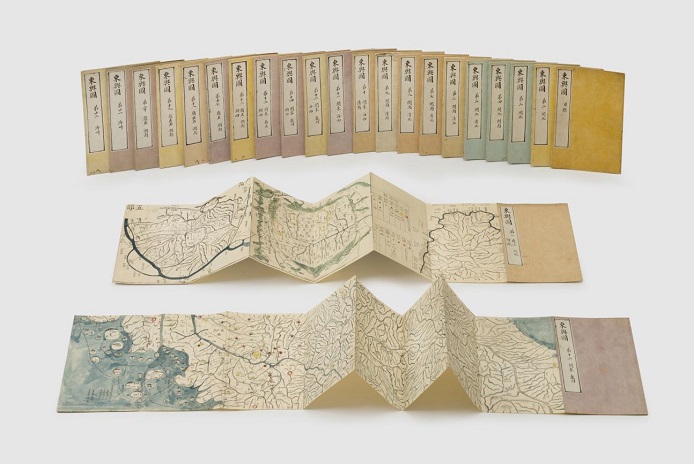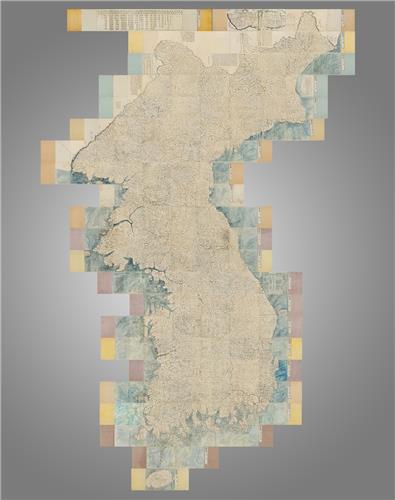
This undated photo provided by the Cultural Heritage Administration shows a variation of “Daedongyeojido,” a famous map of the Korean Peninsula created in the 19th century by the Korean cartographer Kim Jeong-ho. The edition, whose existence had not been known before, recently returned from Japan.
SEOUL, March 30 (Korea Bizwire) — The most exact variation known to date of “Daedongyeojido,” a famous large-scale map of the Korean Peninsula created in the 19th century by Korean cartographer Kim Jeong-ho, has returned from Japan.
The Cultural Heritage Administration (CHA) unveiled the map to the media Thursday as the newly found edition draws public attention as its composition and content is different from earlier known versions.
Daedongyeojido, meaning “territorial map of the Great East,” was first produced and published in 1861 by Kim in the form of an accordion-style album, and was republished three years later.
The map is considered a masterpiece of Korean cartography and is renowned for its accuracy and level of detail.
The CHA said the version retrieved from Japan is based on a woodblock-printed edition produced in 1864.
It is not known exactly how many copies of the first and second editions were published, but there are reportedly about 30 editions inside and out of South Korea.
While the first edition typically consists of 22 booklets, the newly discovered version has a total of 23 booklets, including a catalogue book.
The accordion-style booklets are each 20 centimeters wide and 30 centimeters long. When combined together, they make a full-size map of the peninsula, which is 4 meters wide and 6.7 m long.
The map also features colorings from the original wood-block printed map and additions from “Dongyeodo,” another map presumed to be from the 19th-century Joseon Dynasty (1392-1910).
Dongyeodo is a handwritten copy of the original map that contains geographical information about transportation routes, military facilities and over 18,000 place names from the Joseon era.
Scholars speculate that the map may have also been produced by Kim since the outline of the peninsula, road networks and other features on it are similar to those on Daedongyeojido.

This undated photo provided by the Cultural Heritage Administration shows a variation of “Daedongyeojido,” a famous map of the Korean Peninsula created in the 19th century by the Korean cartographer Kim Jeong-ho. The edition, whose existence had not been known before, recently returned from Japan.
The newly discovered version appears to have been created to address the limitations of Daedongyeojido in including detailed place names and information on the map itself. In fact, it is a combination of the two different maps.
For instance, the second booklet of the map, which depicts the area around Mount Paekdu on the border between today’s North Korea and China, includes information on the distance between Joseon’s military facilities and the boundary monument erected to mark the border with China’s Qing in 1712.
This information is not found in the typical version of Daedongyeojido.
In addition, the 14th book, which depicts the area around Ulleung Island in the East Sea, includes information on the departure points of ships traveling to the island.
The CHA believes the map will have great cultural and academic value because of the rarity of both Daedongyeojido and Dongyeodo maps.
According to the office, the existence of the 1864 edition was made known in July, when the previous owner expressed his intention to sell it.
The Overseas Korean Cultural Heritage Foundation affiliated with the CHA purchased it earlier this month with public funds in March after several thorough surveys and studies by experts.
“It will be an opportunity to expand the scope of research on geographical information from the Joseon Dynasty,” a CHA official said. “We hope it will serve as a chance to increase interest and pride in Joseon’s scientific and cultural heritage.”
(Yonhap)






